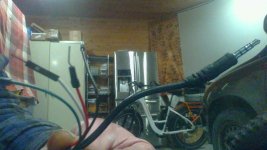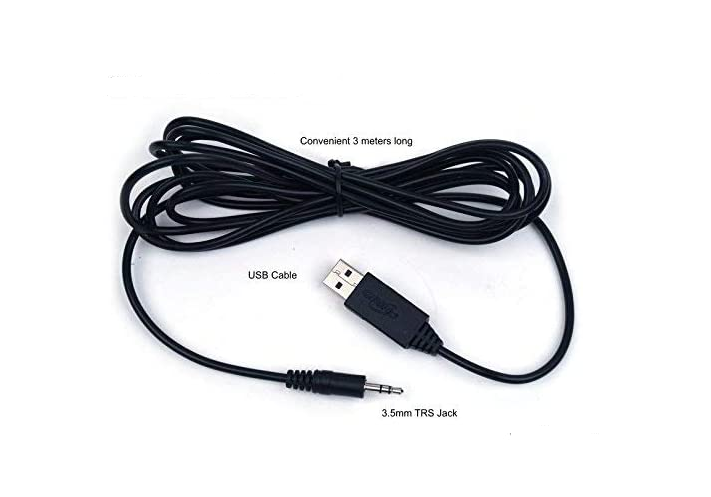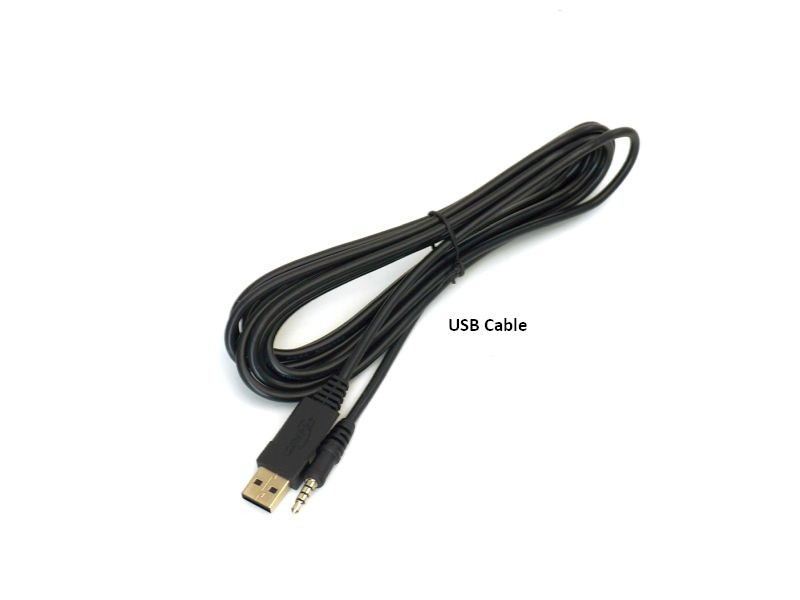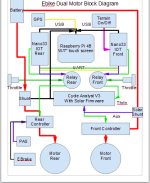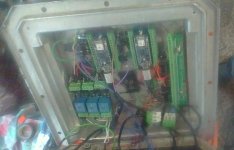Only three wires are used on the CA's TRS 3.5" female serial connector, per the wiring diagram I linked and posted before--RX, TX, Ground. No power is available on that connector per Grin's documentation. (I haven't measured mine, but the single (broken) CA I happened to have in a drawer here with this connector only has three wires from it soldered to the CA board. (I didn't open the sleeving to see if there are more than three wires inside the sleeve).
The Grin Tech USB-serial cables I have here are both just TRS, so one Tip, one Ring, and one Sleeve. Neither are TRRS (Tip Ring Ring Sleeve), so a standard TRS headphone plug would work just fine.
Note that the rings are not the plastic separators between metal, but the actual metal itself. The sleeve is the one that starts just beyond the plastic base of the plug where the wiring goes in. The ring(s) is (are) the metal bands between the sleeve and the tip. The tip is...well, the tip.

You can open your CA to verify the wiring, in case yours is different from the Grin documentation.
TRRS plugs/jacks *are* used on some devices intended for phones and tablets, for instance, as they also have a microphone on the headset, and/or button controls, that use the second ring for their signals.
They may also be used on some serial port devices using the 3.5" jack of this type, probably with 5v power on the second ring, but it is probably device-specific, so the cable would probably have to come with it or be wired to match it..
Note that on a single serial port of this type, you cannot connect more than one device's TX to any other device's RX line. You can hook up several RX lines to one TX line, up to the point that signal degradation occurs due to too much load on the TX line.
So you can't actualy have bidirectional communication between more than a pair of devices on such a serial bus.
There are busses that can do this, like I2C, SPI, etc, but the type used on the CA (a variant of "RS232") can't do it.
The Cycle Analogger has a GPS option, but the GPS does not communicate outside the Analogger box (no connection to the serial port at all)--it is just read by the Analogger MCU to log the GPS data onto the memory card along with the incoming serial data from the CA (over that TRS jack noted above). I cant' remember where the Analogger gets it's power, either an internal coin battery or from the CA's "headlight jack" that carries battery power on it, most likely. Grin's page for the Analogger should have that info if you need it.





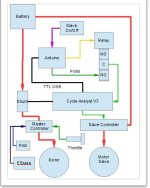
![CA3_Pinouts_2017[1].jpg CA3_Pinouts_2017[1].jpg](https://endless-sphere.com/sphere/data/attachments/191/191563-d66d6a6d019f27df63457a69072d3833.jpg)
